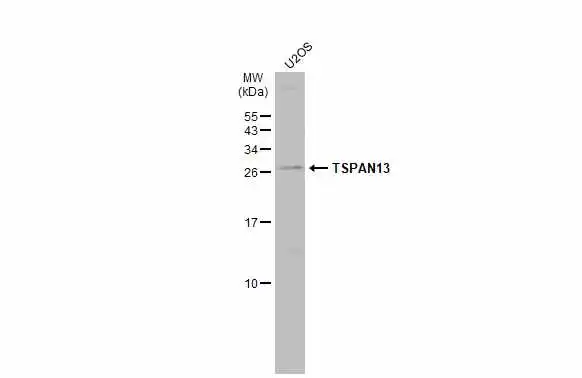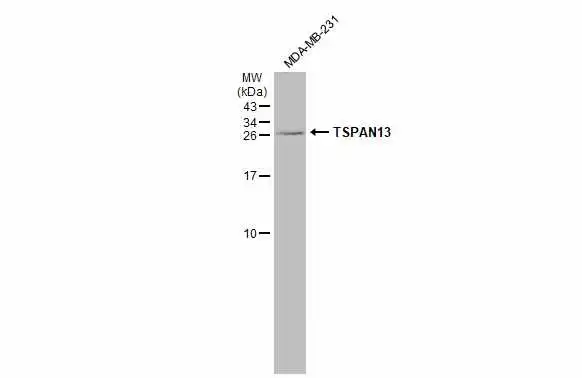
Whole cell extract (30 microg) was separated by 15% SDS-PAGE, and the membrane was blotted with TSPAN13 antibody (GTX52155) diluted at 1:500. The HRP-conjugated anti-rabbit IgG antibody (GTX213110-01) was used to detect the primary antibody, and the signal was developed with Trident ECL plus-Enhanced.
TSPAN13 antibody
GTX52155
ApplicationsFlow Cytometry, Western Blot
Product group Antibodies
TargetTSPAN13
Overview
- SupplierGeneTex
- Product NameTSPAN13 antibody
- Delivery Days Customer9
- ApplicationsFlow Cytometry, Western Blot
- CertificationResearch Use Only
- ClonalityPolyclonal
- Concentration1 mg/ml
- ConjugateUnconjugated
- Gene ID27075
- Target nameTSPAN13
- Target descriptiontetraspanin 13
- Target synonymsNET-6, NET6, TM4SF13, tetraspanin-13, tetraspan NET-6, transmembrane 4 superfamily member 13, transmembrane 4 superfamily member tetraspan NET-6, tspan-13
- HostRabbit
- IsotypeIgG
- Protein IDO95857
- Protein NameTetraspanin-13
- Scientific DescriptionThe protein encoded by this gene is a member of the transmembrane 4 superfamily, also known as the tetraspanin family. Most of these members are cell-surface proteins that are characterized by the presence of four hydrophobic domains. The proteins mediate signal transduction events that play a role in the regulation of cell development, activation, growth and motility. [provided by RefSeq, Jul 2008]
- Storage Instruction-20°C or -80°C,2°C to 8°C
- UNSPSC12352203
References
- Berkovits BD, Mayr C. Alternative 3' UTRs act as scaffolds to regulate membrane protein localization. Nature. 2015,522(7556):363-7. doi: 10.1038/nature14321Read this paper






